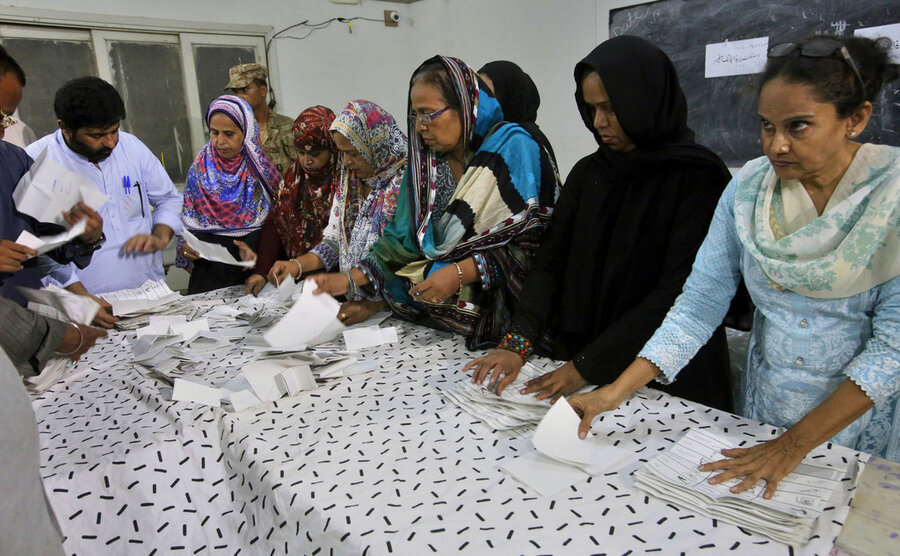Pakistan’s election: a victory for women
Loading...
Pakistan is one of the world’s largest democracies, yet because it also has the second-largest Muslim population, it has long ranked near last in female participation in elections. In Wednesday’s vote for a new National Assembly, however, the country’s social conservatism toward women’s rights may have finally been broken – perhaps even influencing the results and countering the heavy hand of the military in Pakistani democracy.
Compared with the 2013 election, which was the last one, 3.8 million more women were eligible to vote July 25. And early counting suggests more women voted than ever before. The cultural shift was most remarkable in traditional areas. Tens of thousands of women cast ballots for the first time, ignoring calls from village elders and religious leaders to stay away from polling stations out of a patriarchal notion of honor.
“Today I feel I’m a complete Pakistani,” one 27-year-old woman told Agence France-Presse after she voted. “I have got my right which had been denied to me since I was 18.”
The rapid upswing in women voters was not a spontaneous uprising. Rather, Pakistani officials were shocked into action in recent years by the fact that many voting districts saw no women voting at all. A 2017 law now dictates that a district’s vote count will be nullified if the female voter turnout does not reach 10 percent. And the government launched a campaign to register women to vote in areas with a history of low female turnout.
In addition, officials have made it easier for women to vote by having separate voting areas for men and women as well as separate election officials and bathrooms. And political parties are required to have 5 percent of their candidates be women, which may have helped draw more women to vote. During the campaign, the leading parties made strong pitches to female interests.
The gender gap in voting still has far to go. Officials estimates about 9 million women were still not registered to vote this time. Yet the sight of so many women lined up to vote sent a powerful message about equality in democratic rights.





